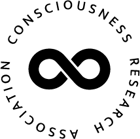
Psychology and Culture
(1) Background: Meditation, originally stemming from the Buddhist tradition, has been the subject of extensive psychological research, with a growing body of literature exploring its effects on various mental and physical health aspects. (2) Methods: This article consists of two studies conducted in two Vietnamese Buddhist Monasteries. Study 1 investigated brain activity during Zen meditation among monks and nuns (N = 16) and a control group of non-practitioners (N = 3). Study 2, conducted on nuns (N = 13), explored the effects of meditation experience and essential oil inhalation on brainwave activity, with two measurements taken during short meditation sessions separated by inhalation. (3) Results: Study 1 showed that monks had higher alpha and theta activity during meditation compared to non-meditators. Moreover, advanced practitioners could transition from beta waves during mind-wandering to alpha waves within short 5-min sessions, indicating their ability to dynamically regulate brain activity even in brief meditative states. Study 2 found no significant differences between nuns with varying meditation experiences but revealed a significant decrease in theta wave amplitude after inhalation. (4) Conclusions: Together, these studies deepen our understanding of neural activity in advanced meditation.
Keywords: meditation, monastery, Zen, EEG, Vietnam, aromatherapy
Różycka-Tran, J., Truong, K. H. T., Bochniarz, K. T., Radoń, S., & Tran, Q. A. (2025). Zen Meditation and Aromatherapy as a Core to Mental Health: Studies in Vietnamese Monasteries. Religions, 16(4), 497.
Study 1
ZEN IN THE BRAIN
Prof Joanna Różycka-Tran with collaborators conducted pioneering studies in Vietnamese Zen monasteries on the bioelectric brain activity during Zen meditation. The study involved monks and nuns during meditation sessions over extended stays in the monasteries.
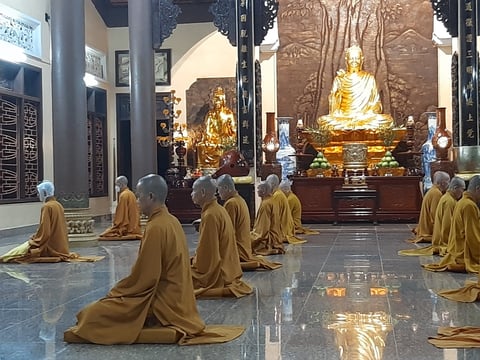

This study investigated the bioelectric brain activity associated with Zen meditation in an ecologically valid monastic setting, comparing experienced Zen practitioners with nonmeditating controls. The experimental group consisted of Vietnamese monks from Truc Lam Tay Thien and Truc Lam Thuong Chieu monasteries, while the control group comprised nonpractitioners. EEG data were collected using a portable 4-channel BrainBit Flex cap during both morning and evening meditation sessions, capturing theta (5-8 Hz), alpha (8-13 Hz) and beta (15-30 Hz) frequency bands. Results indicate that monks exhibited significantly higher alpha and theta band power during meditation than controls, with no changes in beta power. This pattern distinguishes Zen meditation from other forms, like mindfulness practices, where reductions in beta power are often observed. Notably, there were no significant EEG differences in monks’ brain activity between meditation and mind-wandering states, nor between brief (4-minute) and extended (1.5-hour) meditation sessions, suggesting a high degree of continuity between meditative and non-meditative states in advanced practitioners.
These findings contribute to understanding the neural mechanisms of Zen meditation, which appears to foster a distinct state combining relaxation and sustained alertness. The study also demonstrates the effectiveness of using mobile EEG technology for in-situ data collection in naturalistic environments, supporting the advancement of meditation research beyond laboratory constraints.
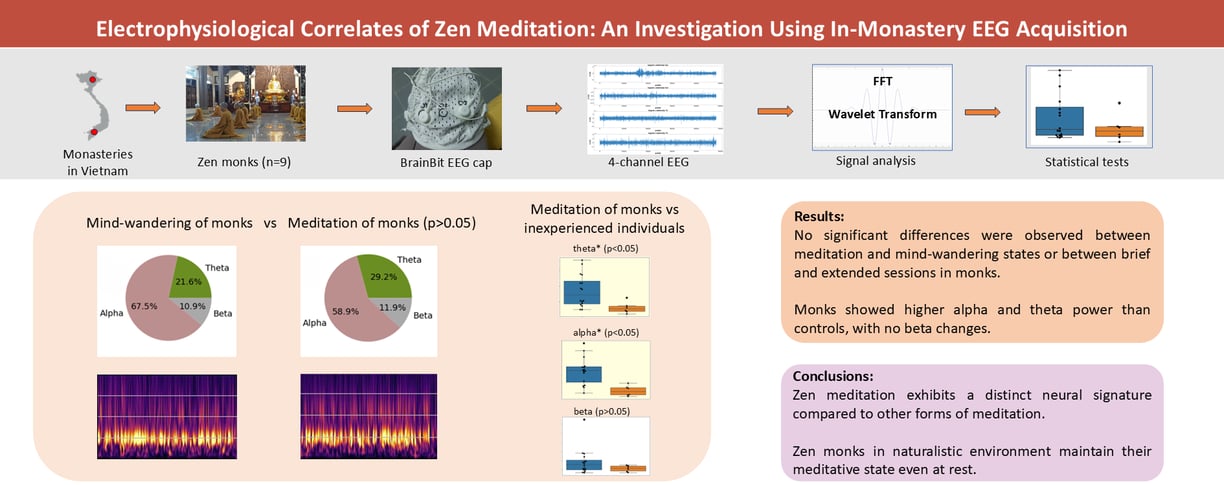

Study 2
Study 3
The article presents a report on a stay at the Truc Lam Zen monastery in Da Lat, Vietnam, where we resided for nearly a month with students from the University of Gdańsk. The primary focus of our investigation was the impact of breathing and concentration techniques, routinely practiced at the monastery, on self-regulatory processes. Despite extensive research in Western psychology, the nature and underlying mechanisms of self-regulation remain insufficiently understood. During our time at the monastery, we observed and experienced various psychological changes induced by regular meditation practices. Our observations and experiences suggest that breathing techniques and mental concentration play a crucial role in facilitating effective self-regulation processes.
Różycka-Tran, J., Tran, A. (2014). Self- Regulation Techniques in Vietnamese Zen Truc Lam Monastery. Gdańsk Studies on East Asia, 6, 123-133.
ENERGY IN THE BRAIN
The authors consider the existence of an energy transfer system (ETS) in the human body and its consequences for health, performing a review of the available literature and studies. The article is an attempt to describe the possible psychophysiological mechanism of ETS (i.e. mechanism of transmission of stimuli in connective tissue) based on biochemical reactions, which was first described in Eastern Medicine a long time ago. Some previously reported results suggest that it is possible to modulate the psychophysiological effects on the connective tissue, and that the internal ETS can be activated not only through internal acupoints but also through breath self-regulation techniques. Among the people specialized in such breathing are martial art fighters. In a very preliminary pilot study we investigate four cases in a Vietnamese Thiên Môn Đạo (TMD) group, where breathing techniques result in cardiovascular and blood pressure changes, which can indirectly suggest activation of ETS. An additional energy system in the human body is postulated. However, future research is seriously needed. Findings could be applicable e.g. in cardiac rehabilitation programs.
Keywords: health psychology; energy transfer system (ETS); psychopsychological
functioning; Vietnamese martial art school
Gajewski, M., Różycka-Tran, J., Hao van Le (2019). Psycho-physiological mechanism of the energy transfer in human body: myth or reality? Health Psychology Report. volume 7(4), 267-275.
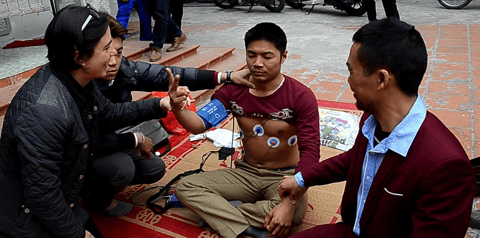

The research was conducted on practitioners of a Vietnamese martial arts school. Thien Mon Dao that has developed techniques for effective control of human psychophysiological system. In our study, we examined the impact of these techniques on the heart, using monitors that control blood pressure and heart rate. The measurements clearly confirm the effectiveness of the techniques used and their effect on heart rate (increase and decrease of pressure, cardiac arrest). The results obtained indicate the occurrence of a new way of selfregulatory processes in the human body, until now untaken into consideration in the western psychological science. The observed techniques (after appropriate training) can be employment in the methods of stress reduction and support for treatment of cardiac disorders.
Różycka, J., Tran A. Q. (2012). The influence of self-regulation techniques on psychophysical processes: Research in the Vietnamese martial arts group Thien Mon Dao. Gdańskie Studia Azji Wschodniej,1, 69–83.
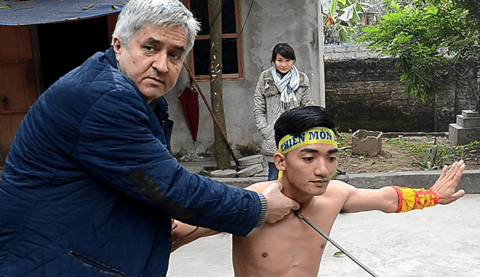

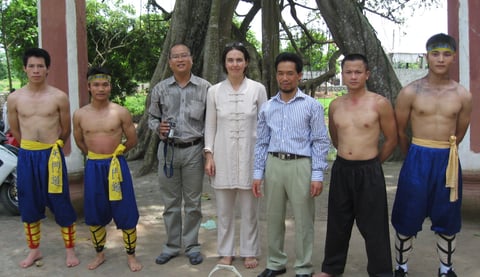

SOUL IN THE BRAIN
The aim of the present research was to investigate the cognitive representations of the noetic perspective (spirituality) and the influence of the activation of these representations on information processing. The article presents the results of three experiments on groups of students (N = 186), using the lexical decision task (LDT) paradigm. In two of these experiments the depth of information processing was also measured by a memory test. The typical result for LDT procedure was not confirmed – the noetic perspective did not cause faster recognition of words related to this perspective. However, the activation of the noetic perspective in the condition of activated attention manifested itself in a better memory of noetic words and in the transfer of positive affect to related noetic objects.
Conclusion: The study findings suggest that the brain processes information related to spirituality, contingent upon its activation, which requires cognitive openness to spiritual concepts.
Keywords: noetic perspective, cognitive representation, information processing, lexical decision task
Różycka-Tran, J., Buczny, J., & Fila-Jankowska, A. (2014). The noetic perspective and information processing. Annals of Psychology, 17(1), 41–103.
Consciousness Research Association
The Association for Consciousness Research
Contact
contact@conreas.com
© 2024. All rights reserved.
